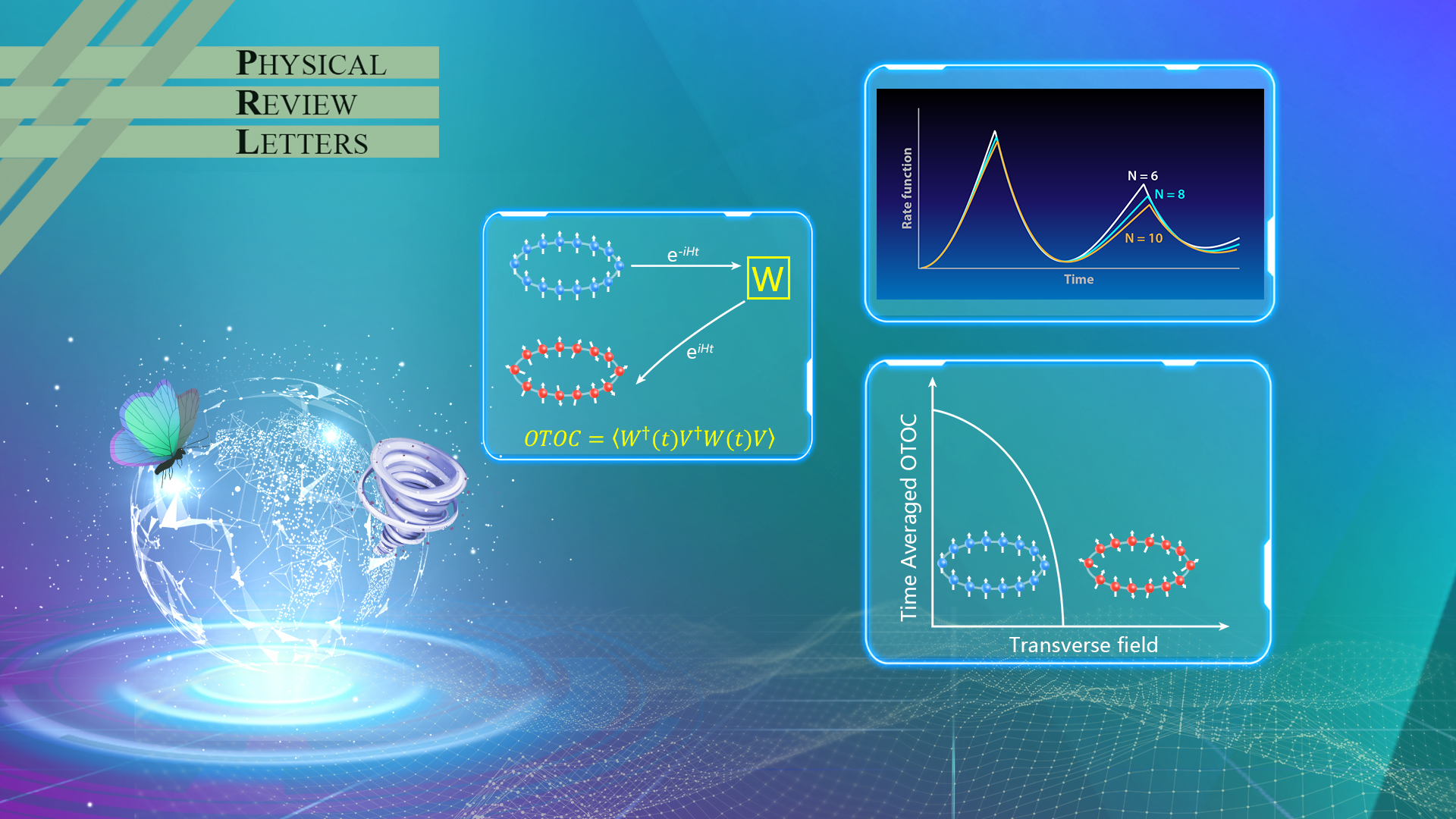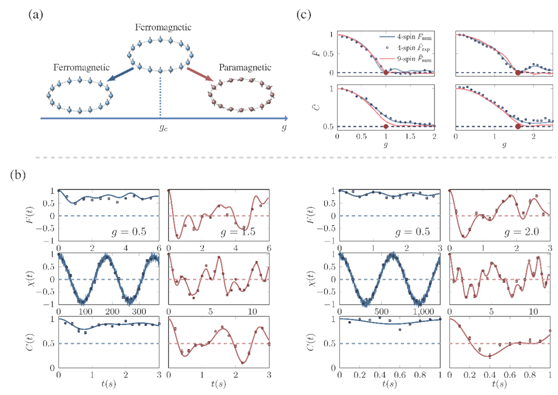On June 22, research led by the Shenzhen Institute of Quantum Science and Engineering (SIQSE) and the Department of Physics at Southern University of Science and Technology (SUSTech) has seen significant experimental progress in detecting the quantum phase transitions with out-of-time-ordered correlations (OTOC).

Their research outcomes were published in the high-impact academic journal, Physical Review Letters (PRL) (IF =8.39), under the title of “Experimental Observation of Equilibrium and Dynamical Quantum Phase Transitions via Out-of-Time-Ordered Correlators.”
Quantum phase transition is one of the most significant phenomena in many-body physics. The equilibrium quantum phase transition is always accompanied by the abrupt change of the order parameter and understood with the renormalized group theory. Progress has been made in the equilibrium quantum phase transition. However, thoroughly understanding the quantum phase transition when it happens far from the equilibrium state has been the focus of considerable study.
In recent years, with the progress of experimental technology, the dynamical quantum phase transition occurred in an isolated system that has attracted the attention and interest of theoretical and experimental researchers.

Fig 1. (a) Illustration of the two kinds of sudden quantum quenches in a periodic one-dimensional ferromagnetic Ising chain. (b) Diagnosis of whether dynamical quantum phase transition happens via the time evolution of OTOC after a quantum quench. (c) Detecting the critical point of equilibrium quantum phase transition with the long-time averaged OTOC.
The research team studied the dynamical quantum phase transition in both the integrable and the non-integrable transverse-field Ising model using a four-spin quantum simulator. As shown in Fig 1. (a), researchers firstly initialized the system to the fully-polarized state, also known as the ferromagnetic phase. They observed the OTOC time evolution after quickly smothering the system to either the ferromagnetic or paramagnetic phase.
The experimental results in Fig 1. (b) and (c) indicate that OTOC can be used to detect both the dynamical quantum phase transition and the critical point of the equilibrium quantum phase transition. The research team also compared the OTOC with the two-body correlation function as an order parameter to detect the quantum phase transition experimentally. They found that OTOC diagnoses the critical point more precisely than that of the two-body correlation and is also much more robust against quantum decoherence. The first experimental work to study DQPT with OTOC has clarified the profound relationship between OTOC and DQPT and paved the new path for studying the EQPTs through the non-equilibrium quantum quench dynamics with quantum simulators.
SIQSE and SUSTech Department of Physics postdoctoral researcher Xinfang Nie and the Chinese University of Hong Kong Shenzhen Assistant Professor Bo-Bo Wei are the co-first authors of the paper. SIQSE Assistant Researcher Tao Xin, Department of Physics Associate Professor Dawei Lu, and Associate Researcher Jun Li are corresponding authors.
This work was supported by the National Key Research and Development Program of China, the National Natural Science Foundation of China, Guangdong Provincial Key Laboratory, and the Shenzhen Science Technology and Innovation Commission.
Article link: https://journals.aps.org/prl/abstract/10.1103/PhysRevLett.124.250601
Proofread By
Photo By